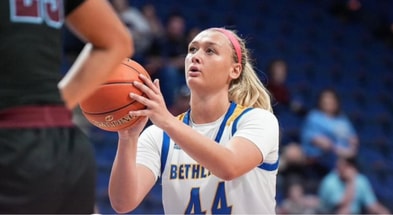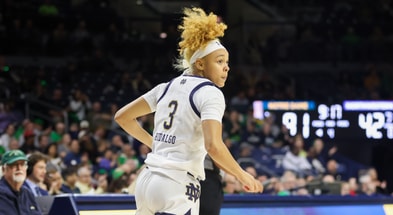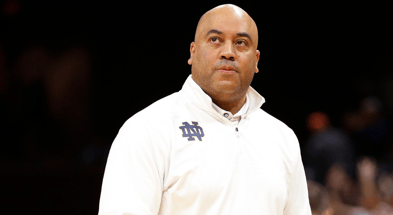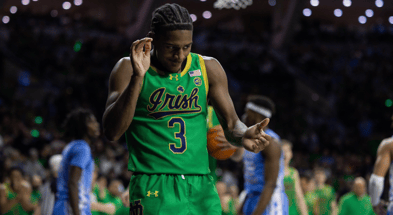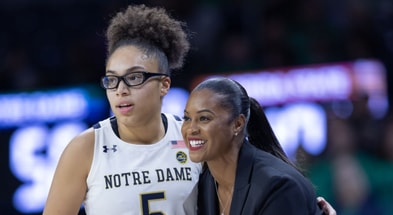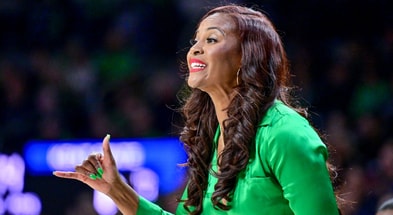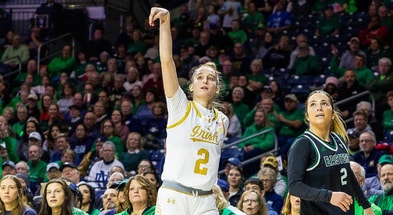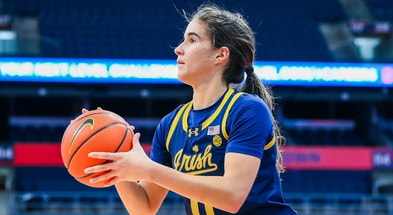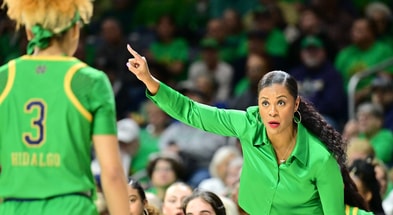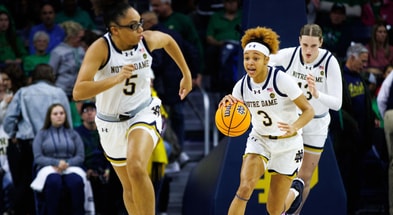Notre Dame men's basketball has its lofty goals still in front, but needs more from its defense to reach them
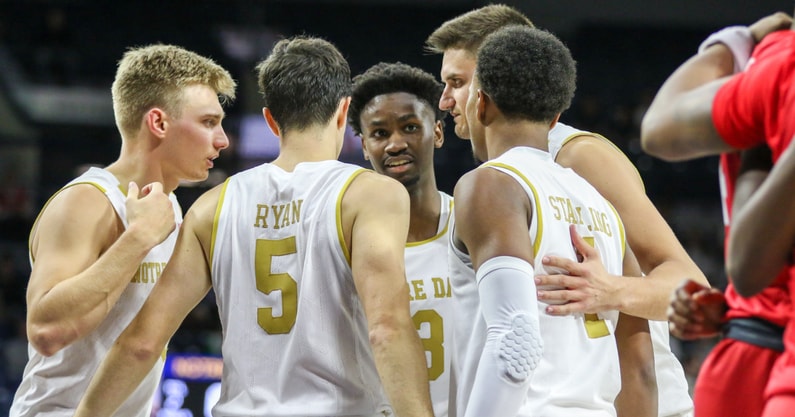
Dane Goodwin couldn’t believe it. Maybe didn’t want to believe it. When told of Lipscomb’s second-half shooting percentage in Notre Dame’s 66-65 escape Nov. 18, the grad student guard fresh off a winning 3-pointer briefly turned frustrated.
“Geez,” Goodwin muttered, glancing down at a stat sheet in front of him.
That number was 76 percent. Seventy-six. And that was after Notre Dame finally clamped down and forced two misses in the final minute. Before those, Lipscomb shot 82.6 percent in the second half. It missed four shots in the first 19:22.
And that is why Notre Dame needed every bit of its 70 percent mark on 3-pointers in the second half to win.
PROMOTION: Join for only $10 to unlock premium access until the start of the 2023 football season
If this were a one-off where every ill-advised mid-range jumper or contested 3-pointer went through the net, it would have elicited disbelief more than exasperation. But the ease with which Notre Dame’s first five opponents have scored has been no fluke.
Notre Dame heads to New York to play St. Bonaventure Friday (4 p.m. ET, ESPN+) ranked fourth nationally in effective field goal percentage, 20th in adjusted offensive efficiency, 11th in two-point percentage and 19th in turnover rate, per KenPom.
Grad student forward Nate Laszewski is averaging 19.6 points and 8.8 rebounds per game and looks like an All-ACC player. Goodwin is at 15.4 points per game. Freshman guard JJ Starling is averaging 14 points per game and hung a career-high 23 on Bowling Green in Tuesday’s 82-66 win. Freshman forward Ven-Allen Lubin (6.6 points) continues to grow.
All told, the Irish offense is humming along and hard to guard.
But – and it’s a big “but” – there’s that other thing. Like last year, defense was never going to be the strength for this group. But nobody saw it becoming this much of a struggle, at least to start.
“Defense for us is going to be a working process,” Laszewski said.
Frequent leaks on that end did not cost Notre Dame a win in any of those five games. The Irish ended a home slate against mid- and low-major opponents with a 5-0 record that included point totals of 88, 82, 82 and 79. That 66-pointer vs. Lipscomb still contained a half in which Notre Dame shot 52 percent overall. Their résumé is free of faceplant performances in buy games, which is more than six ACC teams can say. Their lofty goals remain in front of them.
RELATED: Notre Dame football:
• Three things to know about Notre Dame’s Week 13 opponent, USC
• How Notre Dame found success in another national title-less season
What can’t be disregarded, though, is the state of the defense.
Allowing a high shooting percentage in a game or a half is one thing. There will be off nights. But three second-half white-knucklers in five games against teams ranked 175th or worse at KenPom? That’s a pattern Notre Dame needs to halt quickly.
In five games, Notre Dame has:
• Allowed 76 points to Radford and trailed by 9 in the second half, requiring a go-ahead shot in the final minute to win.
• Allowed 81 points on 50.8 percent shooting to Youngstown State in an 88-81 victory.
• Allowed 48.4 percent shooting and 45 points in the second half to Southern Indiana.
• Needed Goodwin’s 3-pointer with 14 seconds left to beat Lipscomb after leading by 10 with 7:46 left.
Top 10
- 1Breaking
Lamont Butler
UK stat out vs. UT
- 2
Ohio State deficit
Buckeyes athletic department financial shortfall
- 3New
Jay Bilas
SEC Tourney tougher than NCAA Tournament
- 4
Mark Sears' mother reacts
Alabama PG's mom on son's benching
- 5Hot
Top 25 players in CFB
Ranking the best players ahead of 2025 season
Get the On3 Top 10 to your inbox every morning
By clicking "Subscribe to Newsletter", I agree to On3's Privacy Notice, Terms, and use of my personal information described therein.
• Allowed Bowling Green to shoot 53.3 percent and score 40 points in the first half.
The trend is glaring, because Notre Dame has the experience and offensive skill to do some damage in the ACC with simply a decent defense. None of it is lost on head coach Mike Brey or the players. The Bowling Green first half led to a tough conversation.
“I challenged them a little bit at halftime,” Brey said. “I said, ‘Fellas, come on, I’m tired of answering [questions about] us.’”
Notre Dame has tried many fixes, be that 1-3-1 or 2-3 zone, switching 1 through 4 (and sometimes 5) on ball screens, icing screens and playing aggressive help defense. None has produced positive results with staying power yet. The Bowling Green game provided some hope, though.
In the second half, the Irish frequently sent help in post defense and on drives into the lane. They allowed just 5 points in the final 10:54, which included an 8-minute scoring drought. It was a sign of progress in what Brey had identified as a sore spot.
“Our biggest problem right now is hugging guys on the weak side,” Brey said. “We have to stay in the lane. We call them ‘loads,’ not help side. We have to load up. Make them skip [pass] it. Make them use a ball screen, make them throw it all the way over and we’ll deal with that.
“A lot of that is our young guys hugging. That’s a habit we have to help Ven and JJ with. Don’t hug when you’re loading. We still have to be better there.”
There is still time for Notre Dame to make strides in that area and find a defensive identity with staying power. No. 12 Michigan State visits Purcell Pavilion Nov. 30, but after that, the Irish won’t face another team currently in KenPom’s top 50 until Dec. 30 when they host Miami. Their offense makes them a threat to beat almost anyone. But not if the defense doesn’t shed its early season struggles.
“We really want to dig in on the other side of the floor,” Starling said, “because we know that’s what it takes to win games.”

